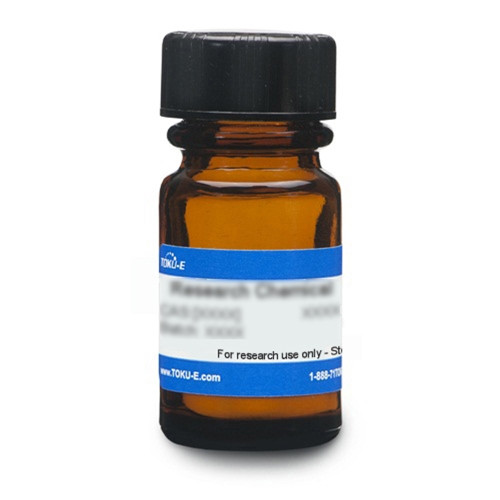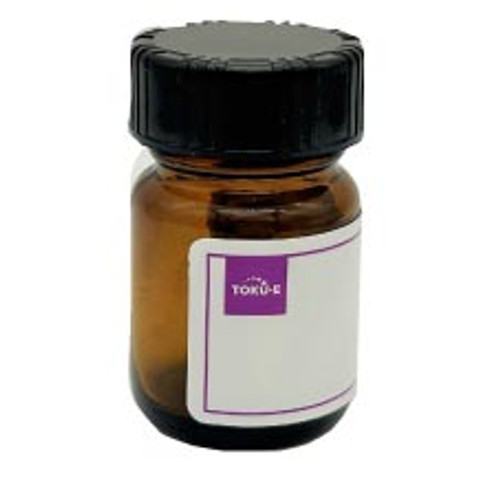Ceftriaxone Sodium, USP is the sodium salt form of Ceftriaxone, a semisynthetic, broad-spectrum, third-generation cephalosporin antibiotic that can be used in proteomics, the study of penicillin-binding proteins, and biosynthetic pathway investigation. This β-lactam is a cefotaxime derivative. The product is formulated as Ceftriaxone Sodium hemi(heptahydrate) and is freely soluble in aqueous solution.
We also offer:
- Ceftriaxone Free Acid (C074)
Ceftriaxone Sodium, USP conforms to United States Pharmacopeia specifications.
| Mechanism of Action | Like β-lactams, cephalosporins interfere with PBP (penicillin binding protein) activity involved in the final phase of peptidoglycan synthesis. PBP’s are enzymes which catalyze a pentaglycine crosslink between alanine and lysine residues providing additional strength to the cell wall. Without a pentaglycine crosslink, the integrity of the cell wall is severely compromised and ultimately leads to cell lysis and death. Resistance to cephalosporins is commonly due to cells containing plasmid encoded β-lactamases. Like many cephalosporins, ceftriaxone is resistant to a number of β-lactamases. Ceftriaxone can be used to study PBPs. |
| Spectrum | Ceftriaxone Sodium is a broad-spectrum antibiotic targeting a wide variety of Gram-positive and Gram-negative bacteria. In comparison to the first and second generation cephalosporins, this third-generation compound is more active against Gram-negative bacteria than Gram-positive bactria. |
| Microbiology Applications | Ceftriaxone Sodium is commonly used in clinical in vitro microbiological antimicrobial susceptibility tests (panels, discs, and MIC strips) against Gram-positive and Gram-negative microbial isolates. Medical microbiologists use AST results to recommend antibiotic treatment options. Representative MIC values include:
|
| Eukaryotic Cell Culture Applications | During in vitro studies with hippocampal astrocytes, researchers found that Ceftriaxone promoted the nuclear translocation of p65 as well as the activation of Akt. It modulated EAAT2 expression (Excitatory Amino Acid Transporter 2) via PI3K/Akt/NF-κB signaling pathway. It may exert protective effects against early brain injury following subarachnoid hemorrhage (SAH).(Feng et al, 2014). Using in vitro models with primary human fetal astrocytes, researchers found Ceftriaxone has a neuroprotective effect and can ameliorate specific neurodegenerative diseases by increasing the update of glutamate, an essential neurotransmitter regulating brain function. It stimulates the expression of one of the major glutamate transporters (Excitatory Amino Acid Transporter or EAAT2) via a signaling pathway called the nuclear factor-kB pathway (Lee et al, 2008). |
| Molecular Formula | C18H16N8O7S3 · 2Na · 3.5 H2O |
| Solubility | Freely soluble in aqueous solution (105 mg/mL), sparingly soluble in methanol, and very slightly soluble in ethanol. |
| Impurity Profile | N,N-Dimethylanilline: ≤20ppm 2-Ethylhexanoic acid: ≤0.8% |
| Residual Solvents | N,N-Dimethylanilline: Not more than 20ppm 2-Ethylhexanoic acid: Not more than 0.8% |
| References |
Feng D et al (2014) Ceftriaxone alleviates early brain injury after subarachnoid hemorrhage by increasing excitatory amino acid transporter 2 expression via the P13K/Akt/NF-kB signaling pathway. Neurosci. 268:21-32 Richards DM, Heel RC, Brogden RN, Speight TM and Avery GS (1984) Ceftriaxone: A review of its antibacterial activity, pharmacological properties and therapeutic use. Drugs 27(6):469-527 PMID: 6329638 |
| MIC | Agrobacterium radiobacter| 1 - 32|| Alcaligenes faecalis| 0.13 - >64|| Bacillus spp.| 0.25 - >32|| Bacteroides caccae| 1 - >256|| Bacteroides capillosus | 1 - 128|| Bacteroides distasonis| 0.06 - >256|| Bacteroides eggerthii (ATCC 27754)| 0.5|| Bacteroides fragilis| ≤0.125 - >256|| Bacteroides ovatus| 1 - >256|| Bacteroides splanchnicus | 1 - 128|| Bacteroides stercoris| 1 - >256|| Bacteroides thetaiotaomicron| 1 - >256|| Bacteroides uniformis| 1 - >256|| Bacteroides ureolyticus| ≤0.03 - 128|| Bacteroides vulgatus| 0.06 - >256|| Bifidobacterium adolescentis| 0.125|| Bifidobacterium bifidum| 1|| Bifidobacterium breve| 2|| Bifidobacterium longum| 4|| Bifidobacterium pseudolongum| 0.5|| Bilophila wadsworthia| 0.03 - >32|| Bordetella bronchiseptica| 0.5 - >64|| Borrelia afzelii| ≤0.0156 - 0.0625|| Borrelia bissettii| 0.03 - 0.0312|| Borrelia burgdorferi| <0.01 - 0.125|| Borrelia garinii| ≤0.015 - 0.0625|| Borrelia valaisiana| 0.03 - 0.0312|| Brevundimonas vesicularis| 0.5 - >64|| Burkholderia cepacia| 4 - >64|| Burkholderia mallei (Pakistan)| 16 - 64|| Campylobacter gracilis| 0.125 - >256|| Campylobacter spp.| 2|| Capnocytophaga ochracea (GAI 5586)| ≤0.03|| Chryseobacterium indologenes| 8 - 64|| Chryseobacterium meningosepticum| 32 - >64|| Citrobacter amalonaticus| ≤0.25 - >64|| Citrobacter braakii| ≤0.25 - >64|| Citrobacter diversus| 0.015 - >32|| Citrobacter farmeri| 0.015 - >128|| Citrobacter koseri| ≤0.06 - >32|| Citrobacter spp.| ≤0.25 - >32|| Citrobacter werkmanii | >64|| Clostridium bifermentans| 0.25|| Clostridium cadaveris| 4|| Clostridium clostridioforme| 4 - 6|| Clostridium difficile| 8 - >128|| Clostridium innocuum| 8 - 16|| Clostridium paraputrificum| ≤0.03 - 8|| Clostridium putrificum| 4|| Clostridium ramosum| 0.25 - 128|| Clostridium septicum | 1|| Clostridium sordellii| 0.25|| Clostridium spp.| ≤0.03 - >32|| Comamonas acidovorans| 1 - 64|| Corynebacterium jeikeium| 0.5 - >2|| Corynebacterium spp.| 0.03 - >32|| Desulfovibrio piger | 4|| Eggerthella lenta| >128|| Enterobacter aerogenes| 0.015 - ≥128|| Enterobacter agglomerans| ≤0.25 - >64|| Enterobacter amnigenus| 0.12 - >64|| Enterobacter asburiae| ≤0.25 - >64|| Enterobacter cancerogenus| ≤0.25 - >32|| Enterobacter cloacae| 0.015 - ≥128|| Enterobacter gergoviae| ≤0.25 - >32|| Enterobacter hormaechei| ≤0.25 - >32|| Enterobacter intermedius| 0.25 - >64|| Enterobacter sakazakii| ≤0.25 - >32|| Enterobacter spp.| ≤0.25 - >128|| Enterobacter taylorae| ≤0.25 - >32|| Enterobacteriaceae| ≤0.06 - 128|| Enterococci| 0.004 - 128|| Enterococcus faecalis| 0.5 - ≥128|| Enterococcus faecium| ≤0.25 - ≥128|| Enterococcus spp.| 16 - >32|| Escherichia coli| ≤0.007 - >512|| Eubacterium lentum| 1 - 64|| Eubacterium limosum| 1 - 64|| Finegoldia magna| 0.125 - 16|| Fusobacterium mortiferum| ≤0.125 - 256|| Fusobacterium necrophorum| ≤0.03 - 256|| Fusobacterium nucleatum| ≤0.03 - 32|| Fusobacterium spp.| ≤0.03 - ≥32|| Fusobacterium varium| ≤0.125 - 256|| Gemella morbillorum| ≤0.03|| Gram-Positive Anaerobic Cocci| 0.12 - 4|| Haemolytic streptococci| 0.008 - 0.12|| Haemophilus influenzae| ≤0.003 - 2|| Haemophilus spp.| 0.001 - 0.06|| Hafnia alvei| 0.12 - >8|| Helicobacter pylori (ATCC 43579)| 0.125 - 0.25|| Klebsiella ornithinolytica| ≤0.25 - >32|| Klebsiella ozaenae| ≤0.25 - >32|| Klebsiella pneumonia| ≤0.007 - ≥128|| Klebsiella rhinoscleromatis| ≤1|| Klebsiella spp.| ≤0.25 - >32|| Klebsiella terrigena| ≤0.25 - >32|| Lactobacillus acidophilus | 1 - 100|| Lactobacillus brevis| 8|| Lactobacillus casei | 4|| Lactobacillus catenaforme| 1 - 64|| Lactobacillus fermentum| 64|| Lactobacillus gasseri | >100|| Lactobacillus jensenii| 1 - 64|| Lactobacillus johnsonii | >100|| Lactobacillus paracasei | >100|| Lactobacillus plantarum| 0.125|| Lactobacillus reuteri| 16|| Lactobacillus salivarius| 4 - 100|| Lactobacillus spp.| 1 - 64|| Micrococcus spp.| 0.25 - 0.5|| Micromonas micros| ≤0.125 - 2|| Moraxella catarrhalis| ≤0.008 - 8|| Morganella morganii| ≤0.007 - 32|| Morganella spp.| 0.5 - >128|| Neisseria meningitidis| ≤0.015|| Neisseria spp.| 0.001 - 0.25|| Nonsporing gram-positive rods| 0.06 - 16|| Ochrobactrum anthropi| 2 - >64|| Oligella ureolytica| ≤0.06 - 64|| Pantoea agglomerans| ≤0.06 - 8|| Peptoniphilus asaccharolyticus| ≤0.125 - 16|| Peptoniphilus indolicus (GAI 0915)| ≤0.03|| Peptostreptococcus anaerobius| 0.125 - 16|| Peptostreptococcus magnus| 1 - 4|| Peptostreptococcus micros| 1 - 4|| Pneumococci| 0.004 - 288|| Porphyromonas asaccharolytica| 0.06 - 256|| Porphyromonas endodontalis | 1 - 256|| Porphyromonas gingivalis| ≤0.03 - 256|| Porphyromonas levii | ≤0.125|| Porphyromonas spp.| 0.03 - >32|| Prevotella bivia| 0.12 - 128|| Prevotella buccae| ≤0.125 - 64|| Prevotella corporis | ≤0.125 - 32|| Prevotella denticola| ≤0.125 - 128|| Prevotella disiens| 0.12 - 64|| Prevotella heparinolytica (ATCC 35895)| 0.125|| Prevotella intermedia| 0.03 - 64|| Prevotella loescheii| 1 - 64|| Prevotella melaninogenica| ≤0.03 - >128|| Prevotella nigrescens| 0.03 -64|| Prevotella oralis| 0.25 - 64|| Prevotella oris| 0.25 - 64|| Prevotella spp.| 0.06 - >32|| Propionibacterium acnes| ≤0.03 - 64|| Propionibacterium granulosum| 0.125|| Proteae spp.| ≤0.25 - >32|| Proteus mirabilis| ≤0.007 - >128|| Proteus penneri| ≥64|| Proteus vulgaris| ≤0.06 - >64|| Providencia rettgeri| ≤0.06 - ≤1|| Providencia spp.| 0.5 - >128|| Providencia stuartii| ≤0.007 - 32|| Pseudomonas aeruginosa| ≤0.06 - ≥128|| Pseudomonas oryzihabitans| 0.13 - >64|| Pseudomonas spp.| 0.5 - 128|| Pseudomonas stutzeri| 0.13 - >64|| Ralstonia pickettii | ≤0.06 - 0.25|| Salmonella| ≤0.25 - 32|| Salmonella agona| ≤0.25 - 32|| Salmonella arizonae| ≤0.25 - 32|| Salmonella bareilly| ≤0.25 - 32|| Salmonella enterica| ≤0.25 - 32|| Salmonella enteritidis| ≤0.25 - 32|| Salmonella hadar| ≤0.25 - 32|| Salmonella heidelberg| ≤0.25 - 32|| Salmonella infantis| ≤0.25 - 32|| Salmonella litchfield| ≤0.25 - 32|| Salmonella Montevideo| ≤0.25 - 32|| Salmonella muenchen| ≤0.25 - 32|| Salmonella Newport| ≤0.25 - 32|| Salmonella panama| ≤0.25 - 32|| Salmonella Paratyphi| ≤0.25 - 32|| Salmonella schwarzengrund| ≤0.25 - 32|| Salmonella spp.| ≤0.06 - 32|| Salmonella stanley| ≤0.25 - 32|| Salmonella stpaul| ≤0.25 - 32|| Salmonella thompson| ≤0.25 - 32|| Salmonella typhi| ≤0.25 - 32|| Salmonella typhimurium| ≤0.25 - 32|| Salmonella virchow| ≤0.25 - 32|| Serratia fonticola| ≤0.25 - >64|| Serratia liquefaciens| ≤0.25 - >32|| Serratia marcescens| ≤0.06 - ≥128|| Serratia odorifera| 0.12 - >32|| Serratia plymuthica| ≤0.25 - >32|| Serratia rubidaea| ≤0.25 - >32|| Serratia spp.| ≤0.25 - >128|| Shigella boydii| ≤0.25 - 0.5|| Shigella dysenteriae| ≤0.25 - 0.5|| Shigella flexneri| ≤0.25 - 0.5|| Shigella sonnei| ≤0.06 - 0.5|| Shigella spp.| 0.0312 - 0.5|| Sphingomonas spp.| 1 - 32|| Staphylococci| ≤0.06 - 128|| Staphylococcus| ≤0.007 - 0.125|| Staphylococcus aureus| 0.03 - >1024|| Staphylococcus auricularis (coagulase-negative + oxacillin-susceptible)| ≤0.25 - >32|| Staphylococcus capitis (coagulase-negative + oxacillin-susceptible)| ≤0.25 - >32|| Staphylococcus caprae (coagulase-negative + oxacillin-susceptible)| ≤0.25 - >32|| Staphylococcus cohnii (coagulase-negative + oxacillin-susceptible)| ≤0.25 - >32|| Staphylococcus epidermidis| 0.03 - >128|| Staphylococcus haemolyticus| ≤0.25 - >128|| Staphylococcus hominis| ≤0.25 - >128|| Staphylococcus intermedius| ≤0.25 - >32|| Staphylococcus lugdunensis | ≤0.25 - >32|| Staphylococcus mitis| ≤0.007 - 2|| Staphylococcus saccharolyticus| 0.5|| Staphylococcus sanguis| 0.015 - 0.5|| Staphylococcus saprophyticus | ≤0.25 - >32|| Staphylococcus sciuri | ≤0.25 - >32|| Staphylococcus simulans| ≤0.25 - >32|| Staphylococcus spp.| ≤0.25 - >32|| Staphylococcus warneri| ≤0.25 - >32|| Stenotrophomonas maltophilia| >8 - >144|| Streptococci| ≤0.008 - 16|| Streptococcus| ≤0.015 - 0.12|| Streptococcus agalactiae| ≤0.03 - 2|| Streptococcus bovis| 0.03 - 0.12|| Streptococcus constellatus| 0.5|| Streptococcus dysgalactiae| ≤0.008 - 0.5|| Streptococcus equisimilis | ≤0.008 - 0.5|| Streptococcus intermedius| 0.25|| Streptococcus pneumonia| 0.002 - >16|| Streptococcus pyogenes| 0.002 - 0.25|| Streptococcus spp.| ≤0.008 - >32|| Sutterella wadsworthensis| 0.25 - >32|| Veillonella dispar| 0.25|| Veillonella parvula| 0.5|| (ATCC 10790)| || Weeksella virosa | 0.5 - 4|| Xanthomonas maltophilia| 8 - >32|| Yersinia enterocolitica| ≤0.06 - 2|| |








